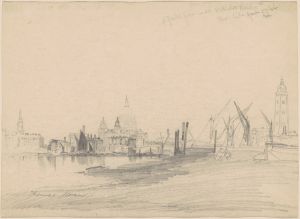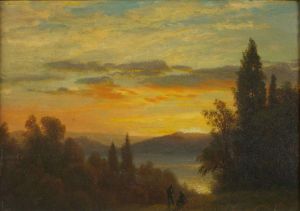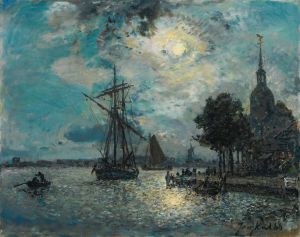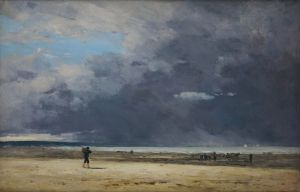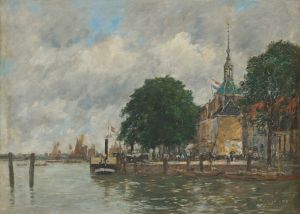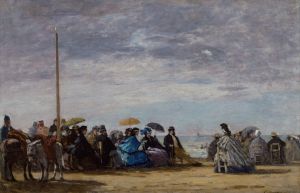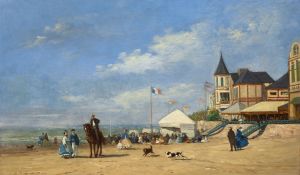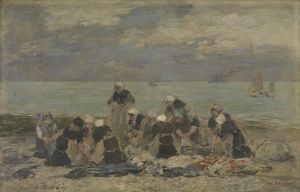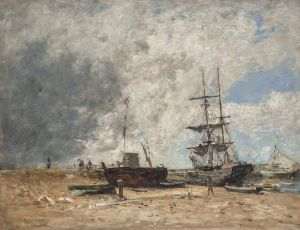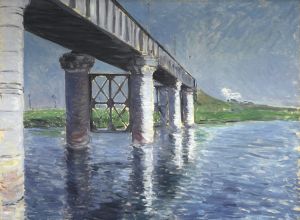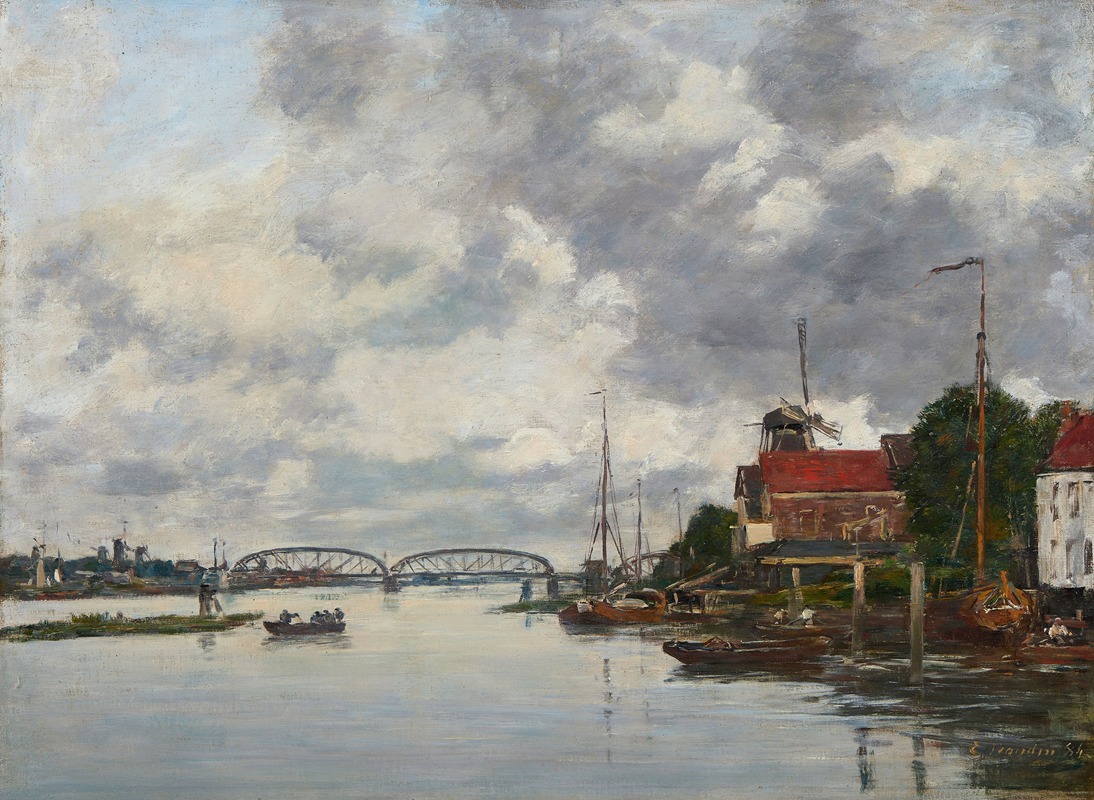
Dordrecht, Pont sur la Meuse
A hand-painted replica of Eugène Boudin’s masterpiece Dordrecht, Pont sur la Meuse, meticulously crafted by professional artists to capture the true essence of the original. Each piece is created with museum-quality canvas and rare mineral pigments, carefully painted by experienced artists with delicate brushstrokes and rich, layered colors to perfectly recreate the texture of the original artwork. Unlike machine-printed reproductions, this hand-painted version brings the painting to life, infused with the artist’s emotions and skill in every stroke. Whether for personal collection or home decoration, it instantly elevates the artistic atmosphere of any space.
Eugène Boudin was a prominent French painter known for his seascapes and as one of the early pioneers of plein air painting, which greatly influenced the Impressionist movement. His work "Dordrecht, Pont sur la Meuse" is one of the many paintings that capture his fascination with the interplay of light and water, although specific details about this particular painting are scarce.
Boudin was born in Honfleur, France, in 1824, and he spent much of his life painting the coastal regions of France. His early exposure to the sea and sky in Normandy significantly influenced his artistic focus. Boudin's dedication to painting outdoors allowed him to capture the transient effects of light and atmosphere, which became a hallmark of his work. He was a mentor to Claude Monet, who later became a leading figure in the Impressionist movement.
"Dordrecht, Pont sur la Meuse" likely depicts a scene in Dordrecht, a city in the Netherlands known for its historic architecture and waterways. The Meuse River, which flows through the Netherlands, is a significant waterway that has been a subject of interest for many artists due to its picturesque landscapes and the vibrant life along its banks. Boudin's choice of this location reflects his interest in maritime subjects and his ability to capture the essence of a place through his brushwork.
Boudin's technique involved using loose brushstrokes and a light palette to convey the fleeting effects of light on water and sky. This approach was revolutionary at the time and laid the groundwork for the Impressionists, who would further explore these themes. His paintings often feature boats, harbors, and the bustling activity of port towns, capturing the dynamic interaction between humans and their environment.
While specific information about "Dordrecht, Pont sur la Meuse" is limited, it can be inferred that the painting embodies Boudin's typical style and thematic interests. His works are celebrated for their atmospheric quality and the way they evoke the mood of a particular moment in time. Boudin's ability to depict the subtle changes in weather and light conditions made his paintings resonate with viewers and critics alike.
Throughout his career, Boudin exhibited his works in various salons and was eventually recognized for his contributions to the art world. He received several accolades, including being named a Knight of the Legion of Honor in 1892. His legacy is evident in the way he paved the way for future generations of artists who sought to capture the natural world with authenticity and immediacy.
In summary, Eugène Boudin's "Dordrecht, Pont sur la Meuse" is a testament to his skill in capturing the essence of maritime landscapes. Although specific details about the painting are not widely documented, it remains an example of Boudin's influential approach to painting and his role in the development of modern art.






